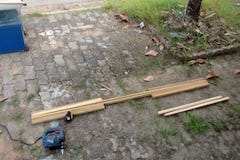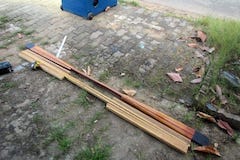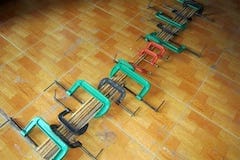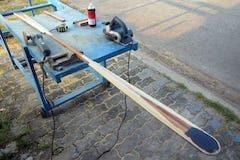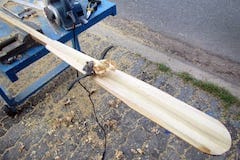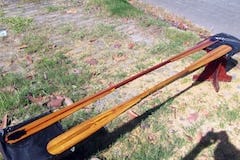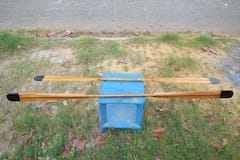 ntil this second design, I’ve been able to “read through” the hull designing parameters: Cp, Cb, Cm, Kmt, S, LCB, LCF, etc… interpret them correctly and know quite well what they do mean in real – world boat characteristics and performance. Many days out there paddling in various conditions and many hours spent on the whiteboard (a.k.a the Free!Ship software) make me feel very confident with my designing process.
ntil this second design, I’ve been able to “read through” the hull designing parameters: Cp, Cb, Cm, Kmt, S, LCB, LCF, etc… interpret them correctly and know quite well what they do mean in real – world boat characteristics and performance. Many days out there paddling in various conditions and many hours spent on the whiteboard (a.k.a the Free!Ship software) make me feel very confident with my designing process.
The hull is shortened to 17 feet, reducing wetted surface area, but with minimum rockers, the waterline length is unchanged, also the designed – displacement is slightly increased to 120 kg, as 110 kg of maximum load is a bit under desire as pointed out in my last 9 days trip. Beam is slightly reduced from 45 cm to 44 cm, but both primary and secondary stabilities is significantly improved. I feel very pleased with this design so far!
Unlike my previous boat, the new one would have a curved deck. It is more difficult to build a round, curved deck, it is also harder to build hatches, compass cup, bungee cord anchor points and other parts… onto it. But with a curved deck, the boat will look nicer, less windage, and weigh less overall. Looking from above, it shapes exactly like a bullet, should I engrave a motto onto it: built like a gun, runs like a bullet
!? 😀
The most important design decision is to increase the amount of deadrise. In my experiences with Serene – 1, the kayak has excellent sea – keeping abilities in rough conditions, something I didn’t feel with all my previous boats (e.g: the Hello World -3, which has a much flatter bottom). I would attribute that ability to the deeper V – hull, which offers quite a low primary stability, but should let you at ease in waves & turbulences.

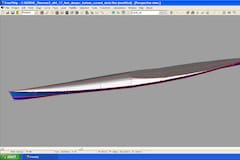
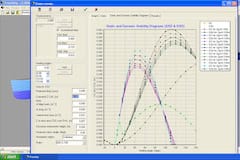
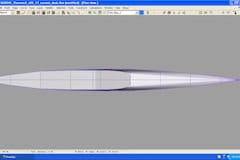
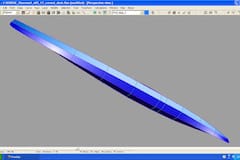
 ‘ve been thinking a lot about the design of my next build.
‘ve been thinking a lot about the design of my next build. 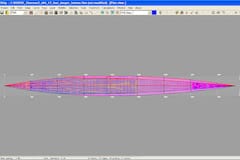
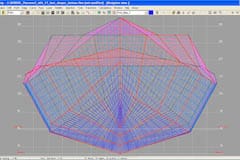
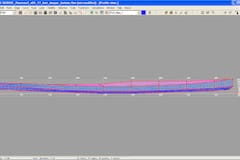
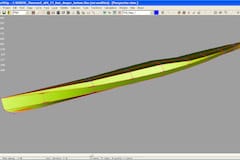
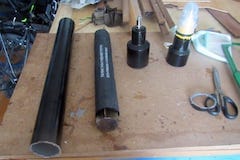
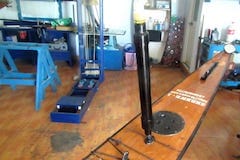
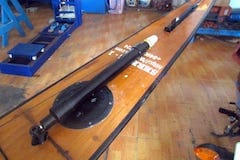
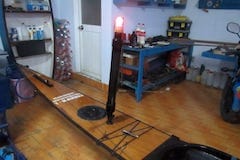
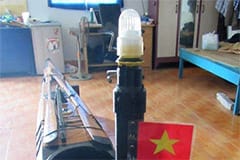
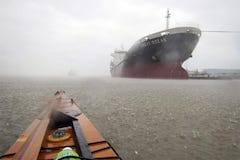
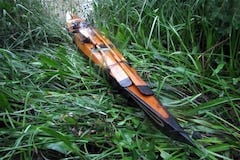
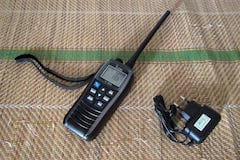
 ext is the paddle float used to assist kayak reentry. Often we’ve seen experienced kayakers performing some kinds of rolling, but for most people, that could only be done with an empty boat. When it’s fully loaded for long journey, it’s almost impossible to roll that heavy hull. The most practical way is, of course, just climb in via the aft deck. My paddle float is just a supermarket plastic bag, I hate needle and thread things, but some little tailoring work would be needed to turn a bag into the float.
ext is the paddle float used to assist kayak reentry. Often we’ve seen experienced kayakers performing some kinds of rolling, but for most people, that could only be done with an empty boat. When it’s fully loaded for long journey, it’s almost impossible to roll that heavy hull. The most practical way is, of course, just climb in via the aft deck. My paddle float is just a supermarket plastic bag, I hate needle and thread things, but some little tailoring work would be needed to turn a bag into the float.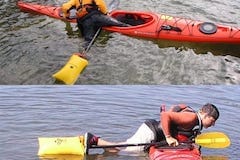
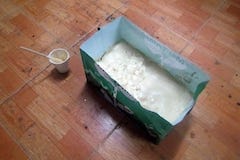
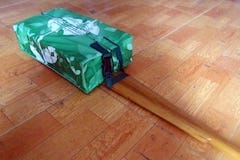
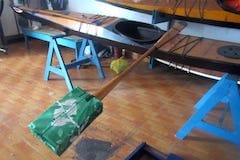
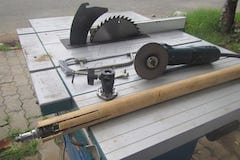
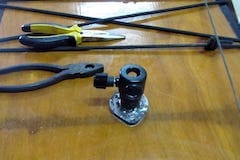
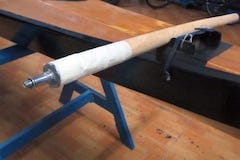
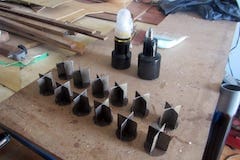
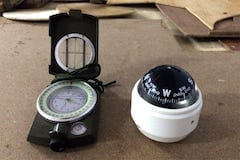
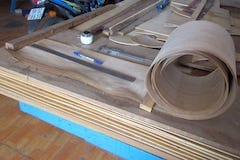
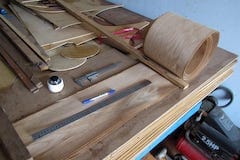
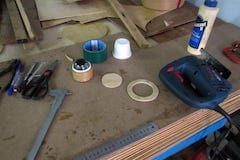
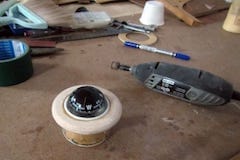
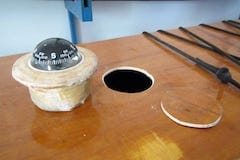
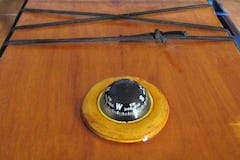
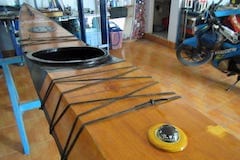
 ó ý tưởng này từ nhiều năm nay nhưng vẫn chưa thực hiện được… Giả sử như bạn muốn làm cái paddling trip nhiều ngày, đi thật xa, nhưng ko đủ quỹ thời gian cho chuyến quay về, hay đơn giản là muốn paddle loanh quanh suốt một ngày rồi quay về nhà nhanh chóng.
ó ý tưởng này từ nhiều năm nay nhưng vẫn chưa thực hiện được… Giả sử như bạn muốn làm cái paddling trip nhiều ngày, đi thật xa, nhưng ko đủ quỹ thời gian cho chuyến quay về, hay đơn giản là muốn paddle loanh quanh suốt một ngày rồi quay về nhà nhanh chóng.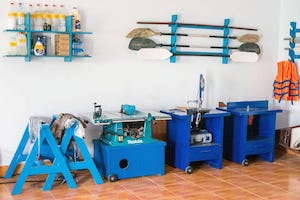
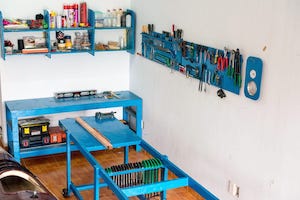
 inal entry of the Serene – 1 series. There wouldn’t be any major updates, add – ons for the kayak since most everything is completed, and I need to shift my times and efforts into some higher – priority tasks. In a sense, an important milestone has been reached, the designing, building and equipping of my newest beloved kayak. A fascinating process at the beginning of which, I didn’t even think I could make it, and I didn’t know where it would lead to, a nice useful watercraft, or… a disaster!
inal entry of the Serene – 1 series. There wouldn’t be any major updates, add – ons for the kayak since most everything is completed, and I need to shift my times and efforts into some higher – priority tasks. In a sense, an important milestone has been reached, the designing, building and equipping of my newest beloved kayak. A fascinating process at the beginning of which, I didn’t even think I could make it, and I didn’t know where it would lead to, a nice useful watercraft, or… a disaster!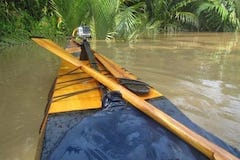
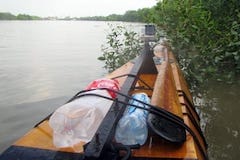
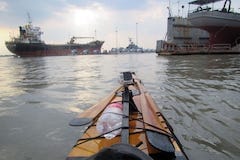
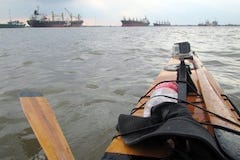
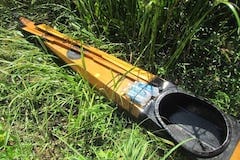
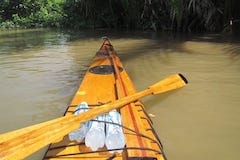
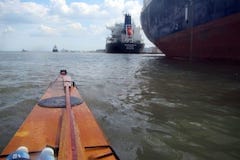
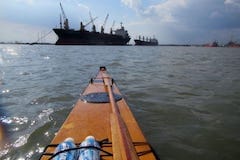
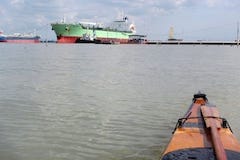
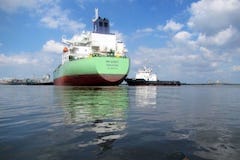
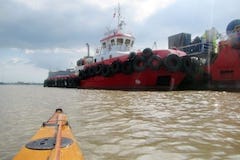
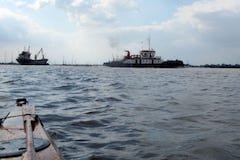
 aving gained some know – hows from my first Greenland paddle, I proceed to making the second one. This is not a “storm paddle” as mentioned in the previous post, but rather just an auxiliary, backup one. It would be shorter (190 cm), and wider (10.5 cm), as my first one, though suitable for long range paddling, lacks the force needed to compete against strong current and wind. I think it’s wiser to have a pair of paddles to compensate each other (and stop using the plastic one completely).
aving gained some know – hows from my first Greenland paddle, I proceed to making the second one. This is not a “storm paddle” as mentioned in the previous post, but rather just an auxiliary, backup one. It would be shorter (190 cm), and wider (10.5 cm), as my first one, though suitable for long range paddling, lacks the force needed to compete against strong current and wind. I think it’s wiser to have a pair of paddles to compensate each other (and stop using the plastic one completely).